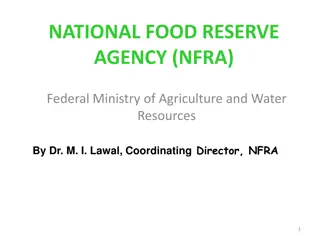Understanding Fractional Reserve Banking Through Multiple-Choice Questions
Test your knowledge of fractional reserve banking with a series of questions covering topics such as its history, profit mechanisms for banks, the money supply, reserve requirements, excess reserves, and the impact of reserve ratio changes on the money supply. Explore concepts related to commercial banking and the role of the Federal Reserve in influencing the economy.
Download Presentation

Please find below an Image/Link to download the presentation.
The content on the website is provided AS IS for your information and personal use only. It may not be sold, licensed, or shared on other websites without obtaining consent from the author. Download presentation by click this link. If you encounter any issues during the download, it is possible that the publisher has removed the file from their server.
E N D
Presentation Transcript
Test Your Knowledge Fractional Reserve Banking Click on the letter choices to test your understanding A B C
Question 1 Fractional reserve banking is a concept A A that is predominantly used only in the U.S. that was created by the Federal Reserve during the Great Depression. B B that dates back to the 17thcentury and is still used worldwide. C C
Question 2 Banks earn profits by charging a higher interest rate on money loaned than the interest rate paid on deposits held. A A increasing their holdings of reserves and decreasing their lending. B B C C lending to the Federal Reserve at the discount rate.
Question 3 The money supply includes A A all currency in circulation. B B a fraction of currency in circulation all currency in circulation plus the total deposits in depository institutions. C C
Question 4 Required reserves are the fraction of deposits that commercial banks hold to meet customer demands for liquidity. A A B B that commercial banks lend out to earn profits. that commercial banks hold as required by the FDIC. C C
Question 5 The required reserve ratio is set by the Federal Reserve s Board of Governors. A A B B varies by state. C C is a regularly used tool of monetary policy.
Question 6 Excess reserves are A A reserves that exceed the capacity of a bank s vaults. the total amount of money in circulation outside the United States. B B the amount of money left for lending after the reserve requirement is met. C C
Question 7 Which of the following is correct? A A a decrease in the reserve requirement means there is more money available to lend, so the money supply expands. B B a decrease in the reserve requirement means there is less money available to lend, so the money supply contracts. C C an increase in the reserve requirement means there is more money available to lend so the money supply expands.
Question 8 The simple money multiplier is calculated as A A 10 times the initial deposit amount. B B 1 divided by the required reserve ratio. the required reserve ratio divided by the initial deposit amount. C C
Question 9 The Money Creation formula is stated as A A 1 divided by the required reserve ratio. B B Excess reserves divided by the simple money multiplier C C The simple money multiplier times excess reserves.
Question 10 Calculate the maximum money creation potential of a $1000 deposit when there is a 20% required reserve ratio. $1,000 is expanded by $4,000 to become $5,000 of potential money creation. A A $1,000 is expanded by $9,000 to become $10,000 of potential money creation. B B $1,000 is expanded by $2,000 to become $3,000 of potential money creation. C C
Thank You for participating in Test Your Knowledge























